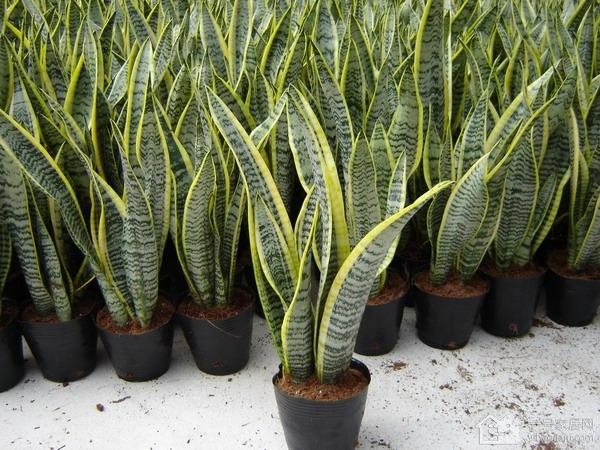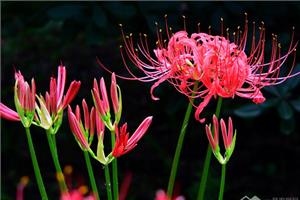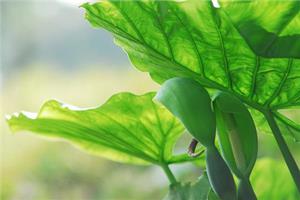The living environment of tiger skin orchid the culture method of tiger skin orchid
Tiger skin orchid, also known as tiger tail orchid, tiger tail orchid is a relatively drought-tolerant plant, adaptability is relatively strong, because the tiger tail orchid breeding methods and points for attention are not many, according to the general requirements on it. Let's take a look at how to raise Tiger Pilan.

1. Basic information of Tiger Pilan
Tiger Pilan is a perennial fleshy herb with a creeping feeling on the rhizome and funnel-shaped leaf clusters growing on the rhizome. The leaves are erect, leathery, fleshy, light green, with irregular dark green stripes that resemble the markings on a tiger, which may be why it is called Tiger Pilan. Generally speaking, the plant height of tiger skin orchid is 50 to 70 meters, and the width of leaves is about 3 to 5 meters. In spring and summer, it is the florescence of Tiger Pilan, it will solitary flowers from the rhizome, showing a raceme, 3murmur5 bouquets, there is a sweet and elegant fragrance.
Second, the living environment
Tiger Pilan is drought-resistant, moisture-resistant and shade-resistant, and can adapt to a variety of harsh environments. It has no great requirements for fertilizer, and it is best to cultivate it with sandy soil with good drainage. In addition, tiger skin orchid should not grow in dark places for a long time, it should be allowed to receive scattered light, but do not suddenly put tiger skin orchid under the sun. It survives best in an environment of 20 ℃ and 30 ℃, and pay attention to maintaining an indoor temperature of 10 Mel in winter.
Third, the culture method of tiger skin orchid
Soil: Tiger tail orchid has strong adaptability and extensive management. 3 parts of fertile garden soil and 1 part of cinder can be used in pot cultivation, and then a small amount of bean cake crumbs or poultry dung can be added as base fertilizer.
Fertilization: Tiger Pilan does not have great requirements for fertilizer, but it can grow better if it can be watered once every 10 to 15 days during the growing period.
Lighting: potted tiger skin orchid should not be in the dark for a long time, should often be given scattered light, otherwise, the leaves will be dark, lack of vitality. But do not suddenly move to the sun, should first adapt to the dark light.
Temperature: Tiger tail orchid likes warm climate, the most suitable temperature for growth is 20Mel 30 °is not cold-resistant, growth stops when it is lower than 13 °, overwintering temperature should not be lower than 8 °, it will rot from the base of leaves, resulting in plant death, we should do a good job of cold protection and warmth during overwintering. In summer, ventilation should be strengthened to reduce the temperature.
Watering: Tiger tail orchid is native to the arid region of western Africa, so it can adapt to the environment of drought and water shortage. Avoid waterlogging, watering should not be too much, just keep the basin soil slightly moist. When there is too much water, the color of the leaves becomes light, and even the rotten roots die. Watering should grasp the principle of "dry and wet and dry".
Turn the basin: the tiger tail orchid usually turns the basin once every 3 years, usually only after the leaf clusters are full. Because of the upward growth of the plant, the ornamental value is high when the flowerpot is small and dense, so the pot should not be large, and it is appropriate to plant in a deeper tube-shaped flowerpot, so that the upper and lower ratio is coordinated and stable, and the underground stolon will circle and extend along the edge of the pot. and it won't affect the growth of the plant.
IV. Key points of daily maintenance
1. Its planting is very simple, and it does not require many conditions. Tiger tail orchid has strong adaptability and extensive management. 3 parts of fertile garden soil and 1 part of cinder can be used in pot cultivation, and then a small amount of bean cake crumbs or poultry dung can be added as base fertilizer.
2. Fertilizer is needed in the growing period, but there is no requirement in other periods. Tiger tail orchid has no great demand for fertilizer, but it can grow better if it can be watered once every 10 to 15 days during the growing period.
3. It needs the right amount of light. Potted tiger tail orchid should not be in the dark for a long time, should often be given scattered light, otherwise, the leaves will be dark, lack of vitality. But do not suddenly move to the sun, should first adapt to the dark light.
4. Special attention is given to the special tiger tail orchid. In pot cultivation, rotten leaf soil and garden soil can be mixed in the same amount and a small amount of mature base fertilizer can be used as substrate. It grows well under the condition of sufficient light, except in midsummer to avoid the direct sun, other seasons should accept more sunlight; if placed in the indoor light is too dark for a long time, the leaves will be dark, lack of vitality. In addition, if it is placed indoors for a long time, it is not suitable to suddenly move directly to the sun. It is better to move to the light first, so that it can have an adaptation process to see the sun again, so that the leaves will not be burned.
Watering should be appropriate and master the principle that it would rather be dry than wet. Usually scrub the foliar dust with clean water to keep the leaves clean and bright. When sprouting new plants at the root neck in spring, the basin soil should be properly watered to keep the basin soil moist; in summer high temperature season, the basin soil should always be kept moist; the amount of watering should be controlled after the end of autumn, and the basin soil should be kept relatively dry to enhance cold resistance. It does not have a high demand for fertilizer, and it applies 1 Mel thin liquid fertilizer twice a month in the growing season to ensure that the leaves are green and thick.
The above is the relevant introduction of this article, I believe you have a simple understanding of this after reading it, if necessary, you can continue to pay attention to the No. 1 home network for more information.
Related
- Wuhan Hospital Iron Tree Blooming Result Was Instantly Frightened by the Gardener Master
- Which variety of camellia is the most fragrant and best? Which one do you like best?
- What is the small blue coat, the breeding methods and matters needing attention of the succulent plant
- Dormancy time and maintenance management of succulent plants during dormancy
- Minas succulent how to raise, Minas succulent plant pictures
- What are the varieties of winter succulent plants
- How to raise succulent plants in twelve rolls? let's take a look at some experience of breeding twelve rolls.
- Attention should be paid to water control for succulent plants during dormant period (winter and summer)
- Watering experience of twelve rolls of succulent plants
- Techniques for fertilizing succulent plants. An article will let you know how to fertilize succulent plants.



